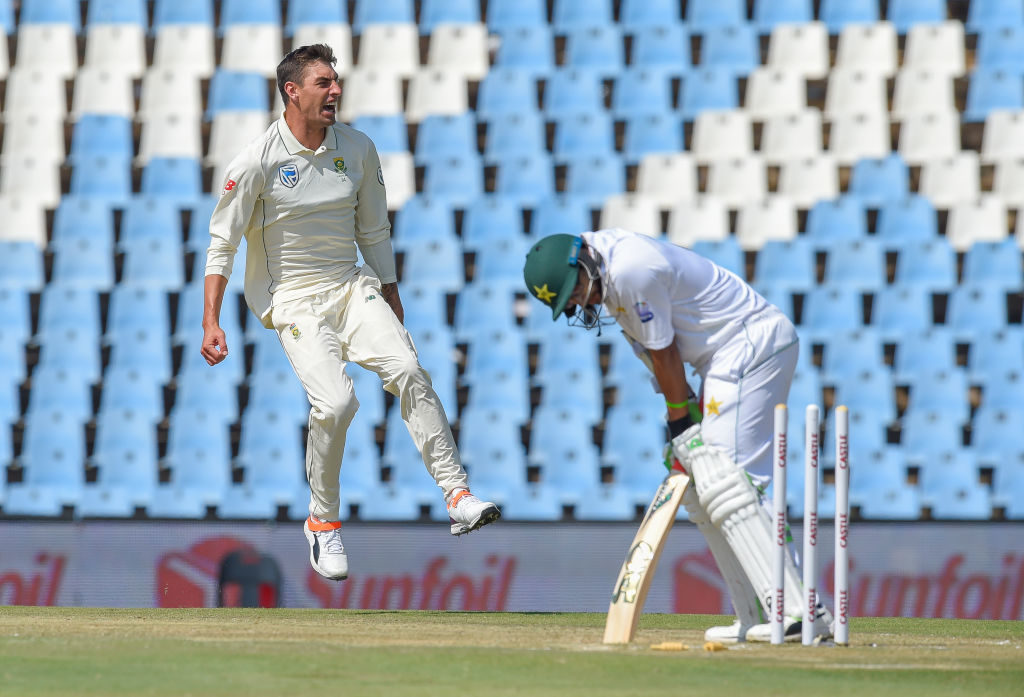Spanish conquistador Hernán Cortés from the 1500s is best remembered through a great military quote: when you arrive on your enemy’s shore and you want your soldiers to fight like hell, ‘burn the boats’, said Cortés.
Let your soldiers know that if they don’t win going forward, they die because there is no way to go back home. I was excited to see some of that fighting spirit on display this Boxing Day (minus the bloodshed). Cricket is a mental game, and the team that wins is usually the team with the right mindset and mental focus. So burn the boats.
All-rounders are a threat to this mindset, which is why I hate them as much as I love them! All-rounders can, of course, be among the most exciting and influential players in a team … but only if they are true all-rounders.
White ball cricket has created a surplus of what was originally dubbed bits-and-pieces players, which usually refers to a batter who turns the arm over in the nets well enough to have his captain take a chance on him out in the middle. Alternatively, a bowling all-rounder would be one who has worked on his batting enough to raise his personal batting average above 15 and, ideally, be scraping into the 20s.
In one-day cricket, the restrictions of a match make it the perfect environment to have a string of players who can bat and bowl well enough to contribute a bit here and a bit there with bat and ball. Test and first-class cricket is very different, however, yet most teams remain terrified at the prospect of relying on specialists – and South Africa’s cricket selectors and spectators have often been the worst of the bunch.
READ ALSO: Amla, Elgar seal Boxing Day Test win
Perhaps this mindset has arisen because we’ve been blessed with an abundance of all-rounders. At times the Proteas have fielded Jacques Kallis, Shaun Pollock, Lance Klusener and even one or more all-rounders in the same Test side, especially if you class Nicky Boje as an all-rounder, which he definitely was in first-class cricket (he also averaged 25.23 in Tests).
You’d think the Proteas would never lose with a combo like that … yet still they suffered their fair share of losses. When batters know that there is plenty of batting depth to come it can take the edge off their performance, as there seems less pressure on them to perform. While that can empower a player to bat with greater freedom, it also reduces the ‘true grit’ factor.
This can also become a problem for the all-rounder. Fail with the bat? No problem – pick up a wicket or two then you’ve contributed and your place in the side is secure. You’ve done your duty for the team. Don’t take wickets … OK, well, just score 20 or 30 runs and then your mates will see that you’ve chipped in. All will be good.
That’s where Cortés’ words come into play: burn the bloody boats, mate!
Let your four bowlers know that THEY need to take 10 wickets between them. No-one else. Let your six specialist batters (and the keeper) know that the bulk of runs (70-80% at least) need to come from their bats.
Burn the boats.
The bowlers will obviously also chip in with runs, depending on their batting skills, and if the opposition’s score goes past 250 then one of your specialist batters is likely to be able to send down some overs of medium pace or spin for some variation and to give the specialist bowlers a breather … but burn the boats!
Make the bowlers and batters roll up their sleeves and get stuck in. Stop trying to protect everyone. Winning a cricket match requires batters to be able to score 70s and 80s and 120s, while one or two bowlers an innings need to be picking up three or four sticks.
Burning the boats on Boxing Day
I was very excited to see the lineups for India and the Proteas for their respective Boxing Day Tests. The Indian selectors went with a four-man attack of Ishant Sharma, Jasprit Bumrah, Ravindra Jadeja and Mohammed Shami – and they rolled Australia twice in 156 overs. Opening bat and occasional spinner Hanuma Vihari sent down six overs for a touch of variation, but the other four shared 149 overs between them.
Exhausting, yes, but they were able to rest up while their six specialist batters (plus wicketkeeper-batter Rishabh Pant) fronted up to the Aussie bowlers.
Having won the second Test against India at Perth by 146 runs, Australia dropped struggling Peter Handscomb (Test batting average 39.00) for all-rounder Mitchell Marsh (Test batting average 25.39, bowling average 43.91, bowling strike rate 76.4) for the clash at the MCG. Marsh scored 9 and 10 and failed to take a wicket in the match, as India totally turned the tables on the Aussies to win by 137 runs.
Ouch!
With six specialist batters in your side you will still sometimes be bowled out for under 200, of course, but going with a top six and four specialist bowlers sets a marker for long-term sustainability, as it can change the mindset of an entire team.
That was what was so exciting about the Proteas’ selection for their Boxing Day Test against Pakistan. Dale Steyn, Kagiso Rabada, Duanne Olivier (recalled in the injury-induced absence of Vernon Philander and Lungi Ngidi) and Keshav Maharaj. No all-rounders, six specialist batters plus Quinton de Kock with the gloves (and a batting average of 36.48 in Tests).
Very nice lineup.
Maharaj bowled just 14 of the 103 overs the Pakistan batters faced and didn’t pick up a wicket, as there were almost none available to him on the pace-friendly Centurion wicket. Imagine if the Proteas had sacrificed a specialist batter for an all-rounder … the potential loss of runs could have made all the difference between victory and defeat in the first Test.
Interestingly, Pakistan also selected only four specialist bowlers, yet they lost the Test. Those four bowlers had South Africa 189-8 and in all kinds of trouble, and also set the cat among the pigeons in the Proteas’ second innings – so they had the firepower to do the job with the ball. If only their batters had managed to scrape together some more runs, the outcome of the Test might have been a whole lot different.
Pakistan top order vs Proteas top order (Test career batting averages)
| Imam-ul-Haq | 30.07 | – | Aiden Markram | 43.83 |
| Fakhar Zaman | 46.00 | – | Dean Elgar | 40.92 |
| Shan Masood | 24.96 | – | Hashim Amla | 47.35 |
| Azhar Ali | 44.45 | – | Theunis de Bruyn | 21.00 |
| Asad Shafiq | 38.78 | – | Faf du Plessis | 41.27 |
| Babar Azam | 35.19 | – | Temba Bavuma | 34.53 |
| Sarfraz Ahmed | 36.88 | – | Quinton de Kock | 36.48 |
| Average | 36.61 | – | Average | 37.91 |
NOTE: Statistics need to be handled with care, especially as the Pakistan side has far fewer Tests under their belts than the Proteas, and although the top-order averages of the two teams are pretty close, the fact that four Proteas batters average above 40 in Tests (compared to two Pakistan batters) indicates a top order with far greater firepower.
READ ALSO: Aussies on the ropes at MCG
It’s tricky to lay down markers, but I’d say a specialist bowler is someone who averages two wickets per innings, or who has the quality to take two per innings, or deliver a strike rate lower than a wicket every 50 to 60 balls (allow some leeway for the spinners).
In professional cricket you shouldn’t consider batters who average less than 40 runs an innings as specialists, as that’s the quality of batter you need to rely on if you are going to select just six batters in your lineup. You can lower the mark to 35 for one or two of your batters (including the keeper), but the bulk of your batting needs to be players who can score real runs regularly. That’s the definition of a specialist batter.
Having an all-rounder in the side who averages 25 to 30 with the bat and who might take one wicket an innings isn’t as valuable as having a bowler who will take two-plus wickets an innings, or a batter you would expect to score 40 or more on average per innings.
It takes brave selectors to make these calls, but cricket is a tough game, so the selectors need to stand tall and make the big calls. Many selectors live in fear that an injury might strike a bowler and leave their team destitute, but that might only happen every 30 matches (if at all) … so why ruin the makeup of your side for a low-risk possibility?
That’s not insurance – that’s madness!
Your team will be in a much better position to push for a win, as they will have the best players for the job at their disposal … and if you occasionally end up with three bowlers for a match and your opposition scores 600, then change the game plan and do your best. At least you know your six specialist batters will have the ability to get you past the follow-on score, so that just maybe, a draw can be salvaged.
One thing that shouldn’t be salvaged, however, are the boats. Not if you want to keep moving forward and conquering your enemy.
One more time: if you want to be the best then ‘burn those boats’!
– SIMON LEWIS
Photo: Christiaan Kotze/AFP/Getty Images








